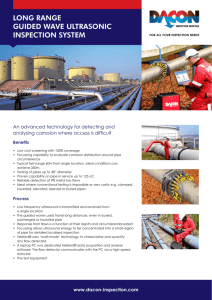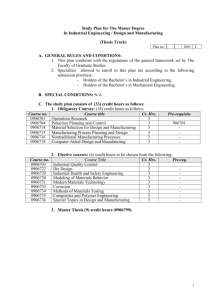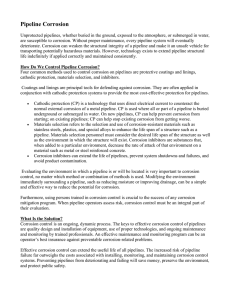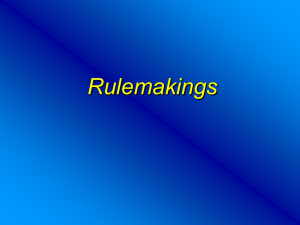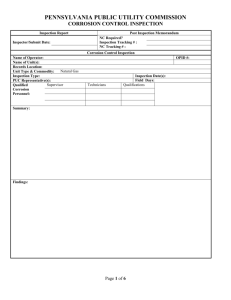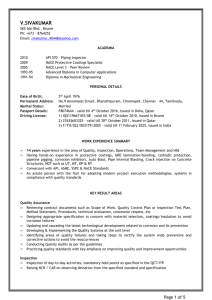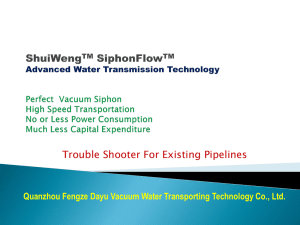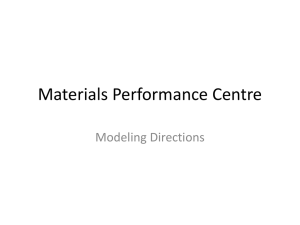P-192.481-Visually-Inspect-for-Atmospheric
advertisement
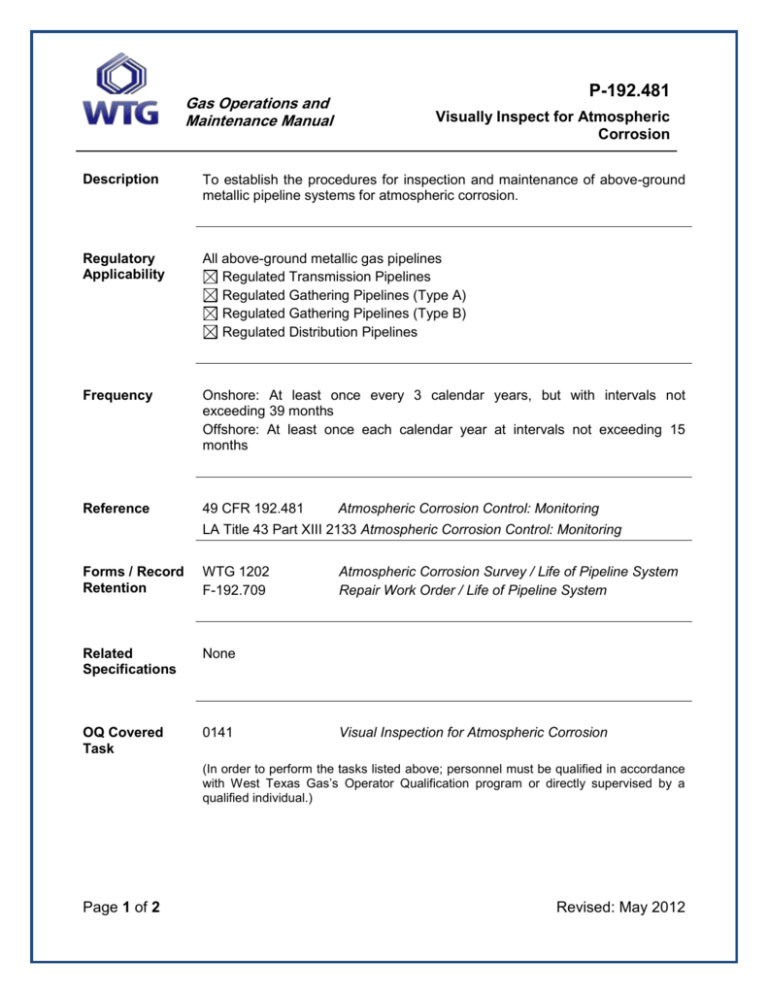
Gas Operations and Maintenance Manual P-192.481 Visually Inspect for Atmospheric Corrosion Description To establish the procedures for inspection and maintenance of above-ground metallic pipeline systems for atmospheric corrosion. Regulatory Applicability All above-ground metallic gas pipelines Regulated Transmission Pipelines Regulated Gathering Pipelines (Type A) Regulated Gathering Pipelines (Type B) Regulated Distribution Pipelines Frequency Onshore: At least once every 3 calendar years, but with intervals not exceeding 39 months Offshore: At least once each calendar year at intervals not exceeding 15 months Reference 49 CFR 192.481 Atmospheric Corrosion Control: Monitoring LA Title 43 Part XIII 2133 Atmospheric Corrosion Control: Monitoring Forms / Record Retention WTG 1202 F-192.709 Related Specifications None OQ Covered Task 0141 Atmospheric Corrosion Survey / Life of Pipeline System Repair Work Order / Life of Pipeline System Visual Inspection for Atmospheric Corrosion (In order to perform the tasks listed above; personnel must be qualified in accordance with West Texas Gas’s Operator Qualification program or directly supervised by a qualified individual.) Page 1 of 2 Revised: May 2012 Gas Operations and Maintenance Manual P-192.481 Visually Inspect for Atmospheric Corrosion Procedure Steps 1. Inspect all aboveground piping. 2. If visual inspection shows evidence of corrosion damage or other conditions warrant, conduct non-destructive testing. 3. Inspect the soil/air interfaces, or transition zone of pipe entering the ground or water to confirm that it is properly coated to prevent the penetration of water between the pipe and the coating. Ensure special attention is paid to areas under thermal disbanded coating, pipe supports, splash zones, deck penetrations, and spans over water. 4. If a condition is observed where moisture may be retained between the coating and pipe, remove the coating, inspect the pipe, evaluate the severity of any present corrosion, take remedial action (See procedure P-192.483), and recoat the pipe prior to the next inspection. (See Procedure P-192.461 or P-192.479.) 5. Complete Form WTG 1202. 6. Issue a repair order (F-192.709) to handle any required repairs. 7. Determine if any safety-related conditions are present, and report per procedure #P-191.23. 8. Maintain a continuing program of painting based upon the results of the external inspection program. Refer to procedure P-192.479 for painting requirements. 9. If the pipe wall loss exceeds 10% of the nominal wall thickness, review the MAOP for possible revision and/or recommend pipeline repair requirements. (See procedure P-192.619.) Page 2 of 2 Revised: May 2012
